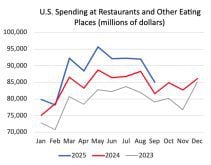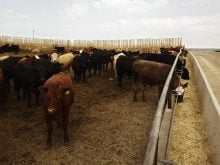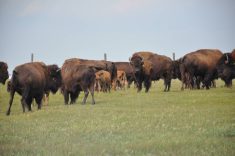Canadian cattle producers should be proud of the cattle identification system they’ve created, says the new chair of the Canadian Cattle Identification Agency.
Steve Primrose said the system implemented in 2001 to ensure accurate animal identification and animal disease and food safety traceback has been an important tool for cattle producers, especially after BSE was discovered in Canada in 2003.
Before BSE, cattle producers were reluctant to adopt the mandatory ear tag system. Primrose credits the late Saskatchewan cattle rancher Carl Block and former Canadian Cattlemen’s Association head Charlie Gracie as visionaries who saw the need for an identification system in the late 1990s.
Read Also

Trump’s tariffs take their toll on U.S. producers
U.S. farmers say Trump’s tariffs have been devastating for growers in that country.
“Thank goodness they forged ahead,” said the president of Primrose Livestock, which buys cattle and ships them to the United States.
“It was a real tough sell in the beginning. Thank goodness they kept on pushing us.”
He said CCIA tags helped federal government officials track the origins of the 10 animals that have tested positive for BSE in Canada since 2003. They also helped assure domestic consumers and international customers about the safety of Canadian livestock and meat, and were key to the initial reopening of the American border to Canadian cattle.
“Without the system in place, how would we have done it? It’s paid big time.”
Primrose said one of his first goals is to improve communication between producers, industry and the identification agency.
“The producers in Canada should be proud of the system they’ve invested in.”
In 2005, cattle producers became able to register their animals’ birth dates with the CCIA as another marketing tool. More than four million birth dates have been registered with the agency, about half since the release of the Canadian Livestock Tracking System database. Between January and April 2007, the CCIA recorded a 59 percent increase in producer activity on the tracking system compared to a year earlier.
“It’s really important even on the domestic front. Age verification trumps dentition every time.”
Since BSE was found in Canada, cattle for export must be verified to be younger than 30 months either by dentition or age verification.
“Age verification is the only way to get meat off the North American continent,” he said.
Ironing out details for premises identification will be one of the next steps. Producers with cattle ID tags would have an number identifying the farm. This would help the CFIA trace an animal in case of a safety issue.














